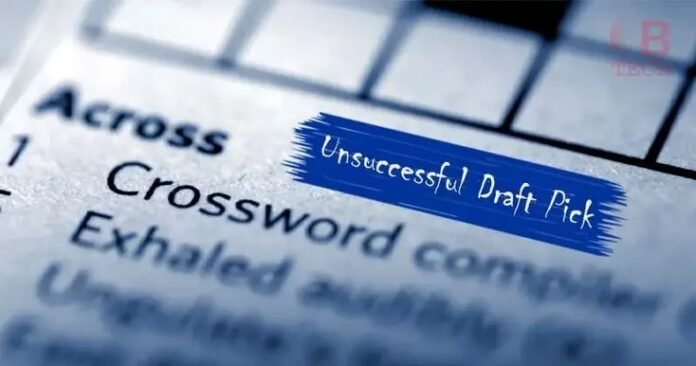In the world of business, unsuccessful draft pick nyt is often measured by the ability to make smart decisions and take calculated risks. However, even the most seasoned entrepreneurs and executives can fall victim to disappointment and failure. One such example is an unsuccessful draft pick, a term commonly used in the sports industry but equally applicable to the business world.
In this article, we will explore the concept of an unsuccessful draft pick in the context of business, its implications, and strategies for overcoming such setbacks.
The Concept of an Unsuccessful Draft Pick
In sports, a draft pick refers to the selection of a player by a team during the draft process. An unsuccessful draft pick, as defined by the New York Times (NYT), is a player who fails to meet expectations and perform at the desired level. Similarly, in business, an unsuccessful draft pick can be likened to a failed investment, a misguided hiring decision, or a poorly executed strategy.
High Hopes and Disappointment
Business leaders often enter into new ventures or investments with high hopes and expectations. They may see tremendous potential in a new market, a innovative product, or a talented individual. However, despite their best efforts, things may not always work out as planned. An unsuccessful draft pick can lead to significant financial losses, damage to reputation, and a blow to morale.
Case Studies
Several high-profile examples illustrate the concept of an unsuccessful draft pick in business. One notable instance is the failed merger between AOL and Time Warner in 2001. The deal, valued at $164 billion, was hailed as a revolutionary move in the tech industry. However, the merger ultimately failed to deliver on its promises, resulting in a massive write-down and a significant blow to both companies’ reputations.
Another example is the rise and fall of WeWork, a coworking space provider that was once valued at $47 billion. Despite its meteoric rise, WeWork’s failed IPO in 2019 and subsequent bailout by its largest investor, SoftBank, highlighted the dangers of overhyping a business model and ignoring fundamental financials.
Strategies for Overcoming an Unsuccessful Draft Pick
While an unsuccessful draft pick can be a significant setback, it is not a death knell for businesses. By adopting the following strategies, entrepreneurs and executives can mitigate the damage and bounce back stronger:
-
Conduct a Post-Mortem Analysis: Dissect the failed venture or investment to identify the root causes of failure. This exercise can help businesses learn valuable lessons and avoid similar mistakes in the future.
-
Diversify and Hedge: Spread risk by diversifying investments and hedging against potential losses. This approach can help businesses weather the storm and minimize the impact of an unsuccessful draft pick.
-
Focus on Core Competencies: Return to the core business and focus on strengthening core competencies. This strategy can help businesses regain their footing and drive growth.
-
Seek New Opportunities: Explore new markets, products, or services that offer fresh opportunities for growth. This approach can help businesses pivot and adapt to changing circumstances.
Conclusion
An unsuccessful draft pick can be a significant disappointment in the business world. However, it is not a guarantee of failure. By learning from mistakes, diversifying risk, focusing on core competencies, and seeking new opportunities, businesses can overcome setbacks and emerge stronger. Remember, even the most successful entrepreneurs and executives experience failures, but it is how they respond that matters. As the saying goes, “Fall seven times, stand up eight.”
